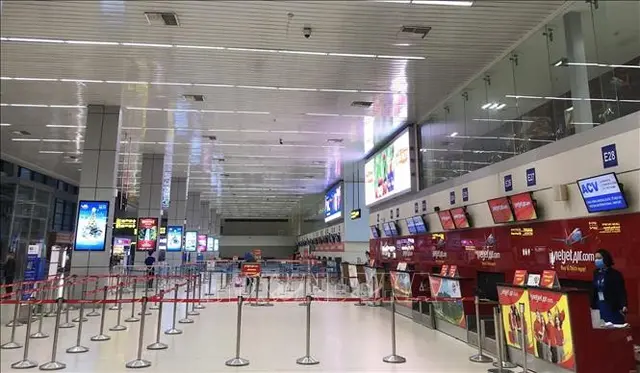By APD writer Alice
After the initial success of efforts to control COVID-19, Asian countries and territories have imposed stricter measures against the wave of infections from abroad.
COVID-19 broke out in Wuhan, China in December 2019, but its new epicenters are now the United States and Europe, making Asians who are worried about the pandemic decide to return to their homeland. Immediately, the number of coronavirus infections began to spike in Asian countries and territories, mainly air passengers.
Hong Kong, where the number of new patients daily did not exceed 10, has suddenly recorded 65 new cases of COVID-19 within 24 hours. The number of infections in Japan, where the disease is relatively under control, has also increased rapidly since last month, mainly in the capital city of Tokyo when passengers from abroad flocked to the country.
In order to stem the wave of imported infections, authorities throughout Asia have tightened their borders. Japan initially only quarantined passengers, but now prohibits most people from Europe from entering the country and is considering a ban on those from the US.
South Korea, which has been praised globally for “flattening the curve” quickly after an early explosive peak in infections, initially required travelers from some countries to quarantine. Last week it expanded the list to cover the entire world. Meanwhile, mainland China, Hong Kong, Taiwan and Singapore simply closed the border to almost all foreigners.
“We believe that under the current situation of the epidemic, minimizing unnecessary entry and exit activities is a responsible and necessary measure to effectively protect the life, safety and physical health of all Chinese and foreign personnel,” said Liu Haitao, director-general for border control and management of the National Immigration Administration in China.
Even some residents are having a hard time getting home. In mainland China, the new border controls have forced most foreign airlines to cut down flights to one a week. Ticket prices have skyrocketed and bookings are constantly canceled.
Alex Fei, a Chinese student at a university in Canada, has struggled to get back home. His flights have been canceled twice — once after Hong Kong banned transits through the hub, and another time when the airline suspended a direct flight from Vancouver to Shanghai.
“Overseas students’ hands are tied for now,” he said, adding they have no choice but to stay in Canada.
Vietnam has taken strict measures to contain the spread of coronavirus. The country officially barred foreigners from entering from March 22. Those eligible to enter Vietnam are forced to make health declarations and experience a 14-day compulsory quarantine period.
As the number of COVID-19 cases continued to rise in the country, many of them were linked with those coming from overseas, Vietnam is applying a stricter measure: nationwide social distancing from April 1 to 15.
Citizens who do return to Asia are often put under strict surveillance as they serve the quarantine period. In Hong Kong, more than 200,000 people quarantined at home must wear tracking bracelets, and their movements are monitored by a smartphone app. Hong Kong’s leader, Carrie Lam, barred all nonresidents on March 19, and returning residents are now tested upon arrival.
Other regions in Asia also use technology to enforce quarantine orders effectively. In mainland China, returnees are quarantined for 14 days in government-designated hotels and must send their body temperatures daily to local authorities via the WeChat app. In Taiwan, the government uses location tracking on mobile phones and officers visit people at home if they leave or turn off their phones.
Singaporeans in isolation must also share location data with the government every day to prove their compliance. Filia Lim, a Singaporean citizen, said the quarantine measures in Singapore were a “headache” because she normally travels many places for her job in human resources. But she said she was “thankful” to the government for close monitoring.
“The virus spread mostly because people didn’t realize they have the symptoms, or for some, they blatantly ignored those symptoms and they interacted with a lot of people despite advice by the government to self-isolate themselves,” she said.
In some cases, the governments even use strict criminal tools to punish those who break the quarantine orders. A 53-year-old Singaporean who breached the order had his passport invalidated, the immigration authorities said.
In Taiwan, a man who had traveled to Southeast Asia was fined $33,000 for sneaking out to a club during his at-home quarantine time. In Hong Kong, a 13-year-old girl who was spotted out at a restaurant wearing a tracking bracelet to monitor those in quarantine was followed, filmed and subsequently shamed online.
Meanwhile, Japanese officials said those who break the quarantine order can be sentenced to a maximum of 6 months imprisonment, or a fine of 500,000 yen (about 4,600 USD).
“Countries have really been struggling to implement their own domestic solutions, and domestic solutions are insufficient for a transnational global health problem,” said Kristi Govella, an assistant professor of Asian studies at the University of Hawaii, Manoa.
He emphasized the need for transnational cooperation in the fight against the pandemic.
By 6 am on April 6, the number of coronavirus infections throughout the world reached 1.22 million, including 8,450 fatalities.
(Cover image: Passengers are absent at Noi Bai International Airport, Vietnam)
(ASIA PACIFIC DAILY)
 简体中文
简体中文

